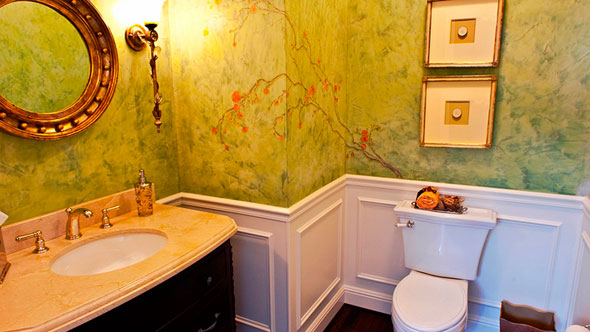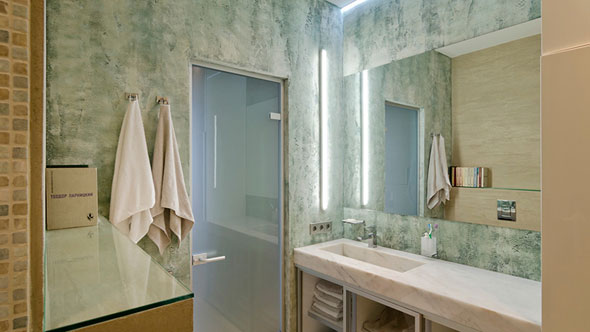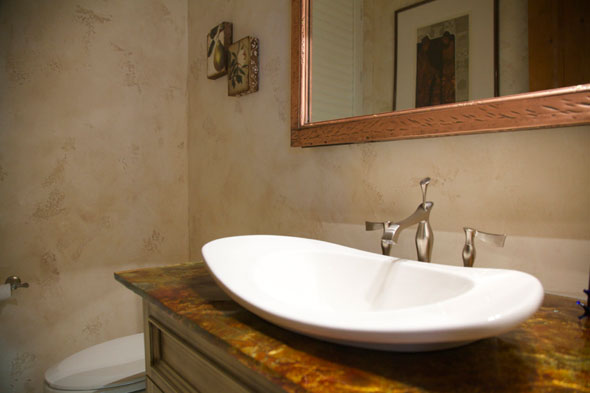Decorative plaster in the bathroom: photo
Or water based paint. However, decorative plaster will help to diversify the interior and give it relief. This wall covering not only creates a unique style, but also has many useful functions. And to make such a repair under the power of anyone. In more detail about the use of decorative plaster in the bathroom, we will talk in this article.
What type of decorative plaster to choose
All types of plaster should not be used for the bathroom, as constant moisture can adversely affect this wall covering. Consider those that are able to withstand high humidity:
- Sanitizing. This porous type of plaster is the basis for any type of wall covering. It is used indoors, the walls of which are in contact with water. It protects the surface from the penetration of moisture and sulfate salts. Such plaster consists of two layers: the upper sanitizing layer prevents the penetration of moisture, and the lower porous one retains water, preventing it from penetrating into the wall. On top of such plaster, you can apply any decorative coating.
Applying sanitizing plaster
- Gypsum. It is suitable for rooms with high humidity, and it is very easy to apply. Due to its high elasticity, you can create a texture on it until it dries.
- Front decorative. This plaster is durable and withstands the most severe weather conditions. However, it has a rather rough structure, which may not suit every design. It would be appropriate in rooms made in a minimalist style.
Attention! Before you buy such plaster, check the composition. The mixture should not contain toxic substances.
- Venetian. It gives the walls a smooth look with a beautiful sheen, it looks spectacular in classic style baths. With the help of it imitate the structure of stone, marble. You can get different options by playing with colors or using wall stencils.
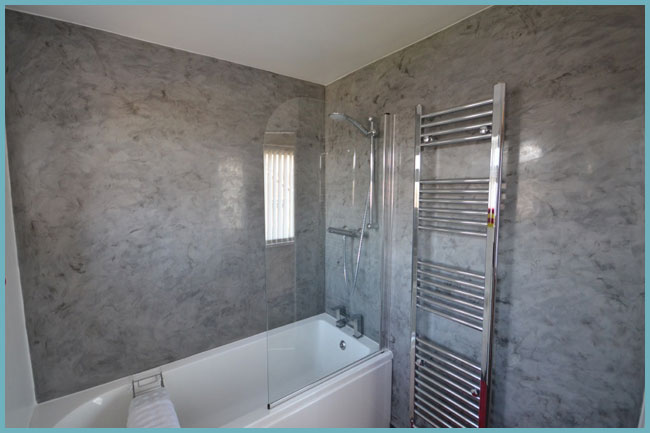
Venetian plaster in the bathroom
The main advantages of decorative plaster for bathrooms
This coating is impermeable. With a large accumulation of moisture, it absorbs excess water, and in dry air, on the contrary, it gives off excess. This creates a natural microclimate in the room, which prevents the formation of mold and mildew.
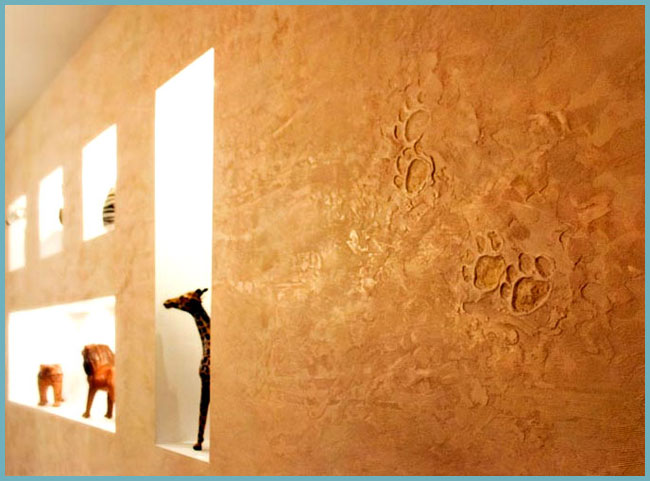
How to apply decorative plaster
First you need to prepare the wall, and for this you need:
- Clean it from the old coating: floor tiles, paint, old plaster.
- Then apply the first layer of plaster, this process is called spraying. To begin with, the surface is moistened with water and a plaster solution is applied, 5 mm thick. The applied layer does not need to be leveled.
Advice! On a wooden coating, "spray" must be applied with a thickness of 9 mm.
- A rough layer is applied over the "spray". If you use a lime-gypsum composition, the thickness of the applied layer should be 7 mm, if cement - 5 mm. The rough layer is applied and leveled with a grater 70-100 mm long.
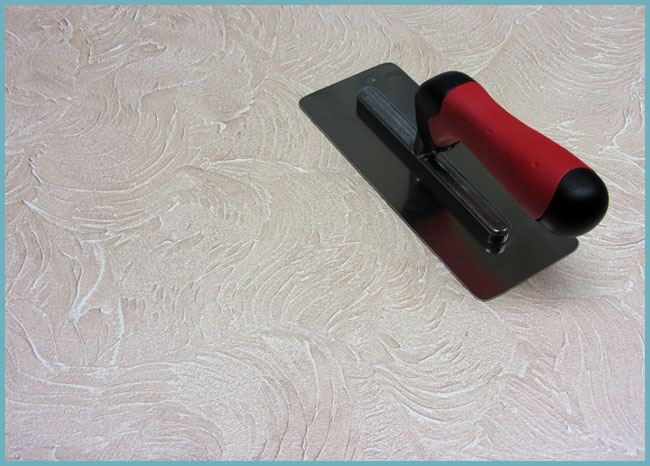
Decorative plaster must be applied in several layers
- Finishing plaster is applied to a pre-moistened surface. The composition is applied to the edge of the spatula and smeared on the wall at an angle of 10-15 degrees. While the solution is not dry, you can create various patterns and reliefs.
Attention! After you have applied the top coat, it needs to dry for several days. Therefore, the bathroom cannot be used for 2-3 days.
Methods for finishing plaster
On decorative plaster, with the help of auxiliary materials, you can get the following types of relief:
- rough uniform. Such a surface can be obtained by using a soft sponge or crumpled newspaper placed in a plastic bag. With the help of these items, you need to process the entire surface, lightly touching it.
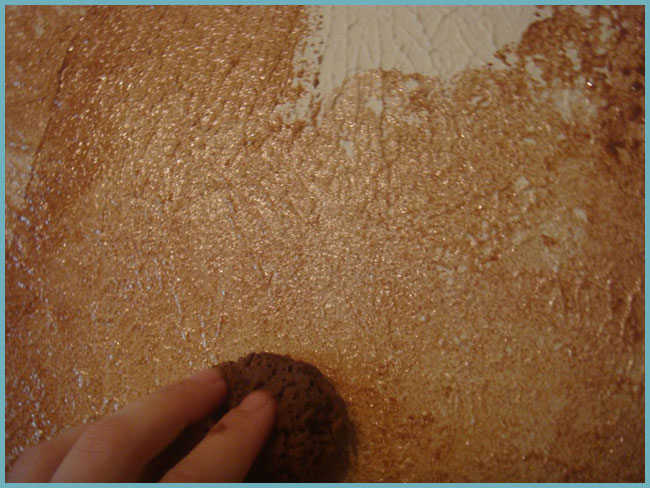
Creating a relief on the surface of decorative plaster
- rough with grooves. This technique is carried out with the help of bark beetle plaster and resembles the effect of thinned wood. It is obtained by marble chips or other granules that are part of such a mixture. The larger the crumb, the larger the pattern will be.
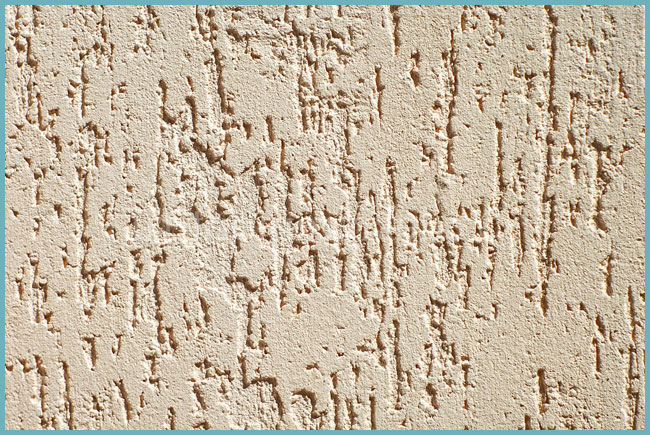
Rough relief with grooves
- furrowed. The relief is created by pressing the spatula on the raw material. In this way, the effect of stone or brickwork is created.
- Venetian. It is obtained by mixing different shades of special mixtures.
Attention! This method requires experience, so if you have never done such work, it is better to trust professionals.
How to make a rough coating "bark beetle" yourself
In order to give the plaster unevenness, grooves, solid small granules, 1.5-2.5 mm in size, must be added to the composition. The application process is as follows:
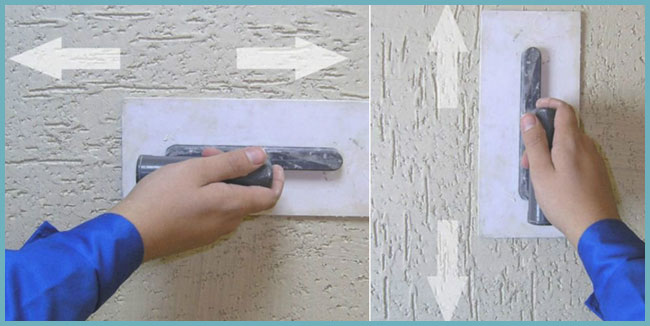
Venetian plaster: luxurious and sophisticated
This type of coating gives the walls a sophisticated look, creating smooth play of color, reminiscent of luxurious bathrooms in a classic, rococo or baroque style. This is a very painstaking process, because it is necessary to apply 5-10 layers and wait for each to dry completely.
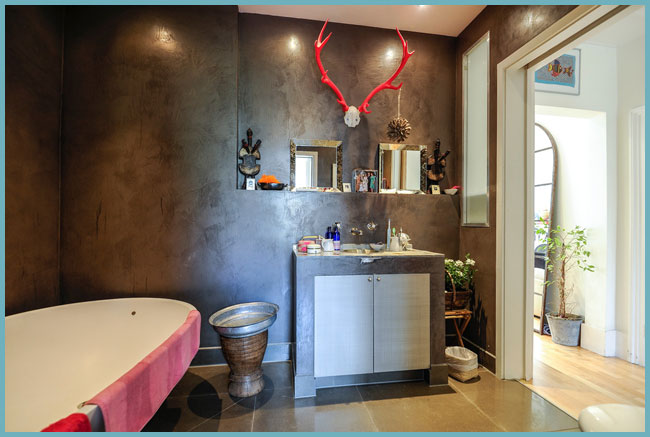
Venetian plaster in the interior of the bathroom
Marble pattern is created with a small spatula. Each new coating should be different in color from the previous one. The finished solution dries quickly, so you need to work quickly. After the drawing takes on the desired form, the wall is carefully polished. To protect the coating from moisture and give gloss, the finishing step is to wax the wall. After it hardens, it can be polished with a suede cloth.
Attention! Walls with Venetian plaster can be washed only after 25 days, after the coating becomes durable.
Not only the appearance will depend on the choice of wall covering in the bathroom, but also how long it will not take to re-do the repairs. Decorative plaster not only allows you to make beautiful patterns to your own taste, but also protects the walls from the harmful effects of moisture.
Applying decorative plaster: video
Decorative plaster in the bathroom: photo
![]()
